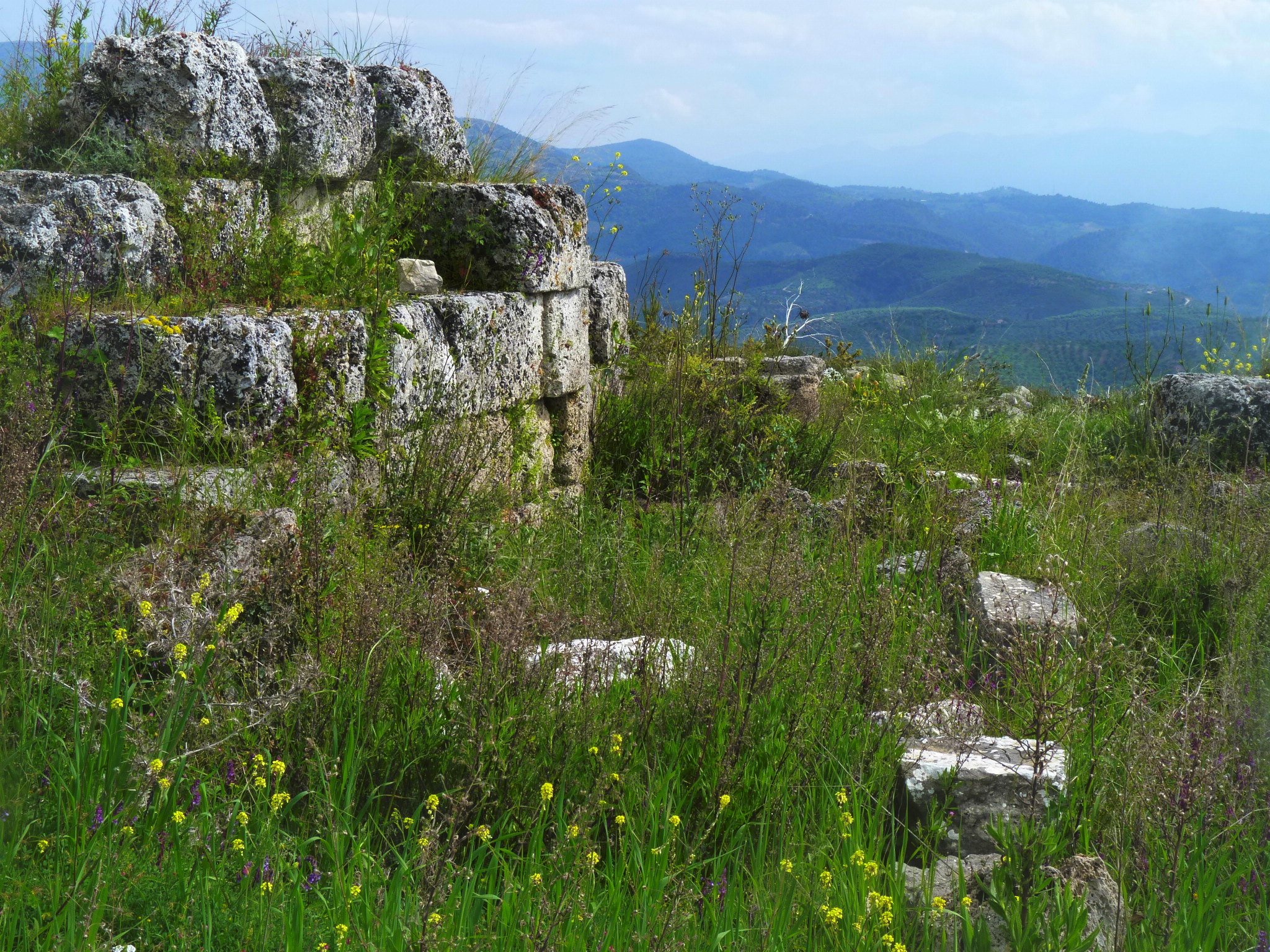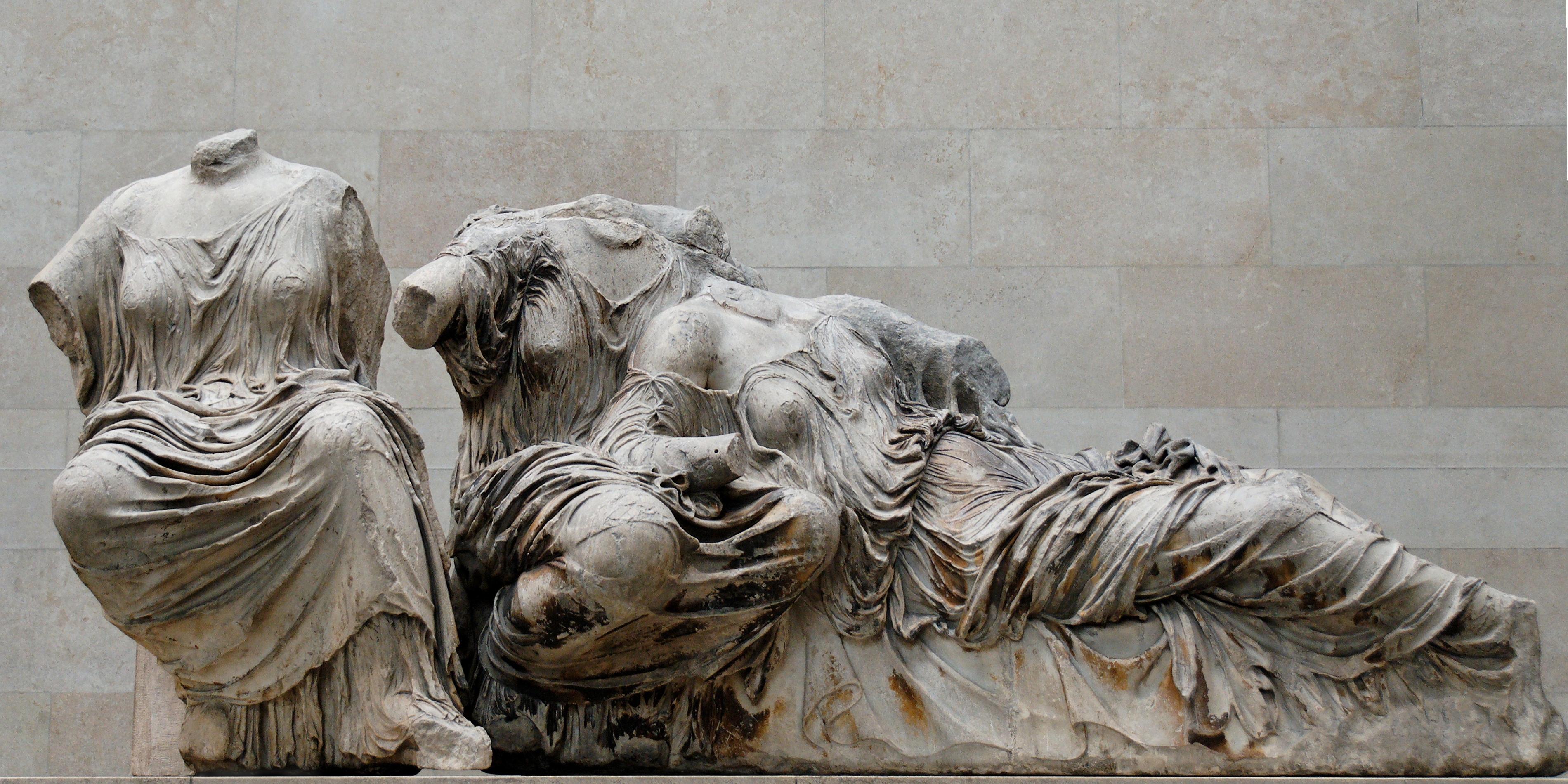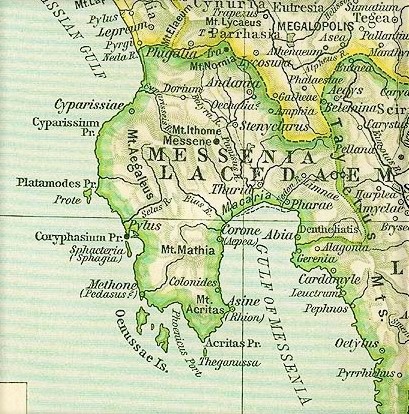|
Lepreum
Lepreum or Lepreon ( grc, Λέπρεον), alternately named Lepreus or Lepreos (Λέπρεος) was an Ancient Greek city-state in Triphylia, a district of Elis (now part of the Elis regional unit). It was located 40 stadia away from the sea at the west end of Mount Minthi and built around two citadels (one at Agios Dimitrios, one at Phyrcus). Surrounded by an abundance of natural resources, Lepreum became an important city in the Classical and Hellenistic ages where it became the capital of the Triphylia region. The city has also been identified by some scholars as the mythical city of Aepy, a city described by Homer in the ''Iliad'' but never discovered. The ruins of ancient Lepreum have been excavated near the present village Lepreo. Mythology and Proto-History Lepreon was the chief town of Triphylia, which is said to have been originally inhabited by the Caucones, whence Lepreon is called by Callimachus "fortified city of the Caukones". The Caucones were afterwards expell ... [...More Info...] [...Related Items...] OR: [Wikipedia] [Google] [Baidu] |
Lepreo Demeter
Lepreo ( el, Λέπρεο, before 1916: Στροβίτζι - ''Strovitzi'') is a village in the municipality of Zacharo, Elis, Greece. Its population in 2011 was 219 for the village and 366 for the community, which includes the small villages Agrapidia, Drakos, Panagies, Revelaiika and Skoupas. It is situated on a hillside, 2 km southwest of Taxiarches, 5 km west of Nea Figaleia and 8 km southeast of Zacharo. Lepreo was named after the ancient city Lepreum. The ruins of Lepreum, 500 m north of the present village, have been excavated in 1982. Population People *Simon Karas (1903–1999), a Greek musicologist See also *List of settlements in Elis This is a list of settlements in Elis, Greece. * Achladini * Aetorrachi * Agios Andreas, Katakolo * Agia Anna * Agia Kyriaki * Agia Mavra * Agia Triada * Agioi Apostoloi * Agios Charalampos * Agios Dimitrios * Agios Georgios * Agios Il ... References External linksLepreo at the GTP Travel Pages {{Zacharo Populated p ... [...More Info...] [...Related Items...] OR: [Wikipedia] [Google] [Baidu] |
Lepreo
Lepreo ( el, Λέπρεο, before 1916: Στροβίτζι - ''Strovitzi'') is a village in the municipality of Zacharo, Elis, Greece. Its population in 2011 was 219 for the village and 366 for the community, which includes the small villages Agrapidia, Drakos, Panagies, Revelaiika and Skoupas. It is situated on a hillside, 2 km southwest of Taxiarches, 5 km west of Nea Figaleia and 8 km southeast of Zacharo. Lepreo was named after the ancient city Lepreum. The ruins of Lepreum, 500 m north of the present village, have been excavated in 1982. Population People *Simon Karas (1903–1999), a Greek musicologist See also *List of settlements in Elis This is a list of settlements in Elis, Greece. * Achladini * Aetorrachi * Agios Andreas, Katakolo * Agia Anna * Agia Kyriaki * Agia Mavra * Agia Triada * Agioi Apostoloi * Agios Charalampos * Agios Dimitrios * Agios Georgios * Agios Il ... References External linksLepreo at the GTP Travel Pages {{Zacharo Populated p ... [...More Info...] [...Related Items...] OR: [Wikipedia] [Google] [Baidu] |
Macistus (Elis)
Macistus or Makistos (), or Macistum or Makiston (Μάκιστον), was a city of ancient Elis, in Greece. It is one of the six cities (along with Lepreum, Phrixae, Pyrgus, Epium, and Nudium) founded by the Minyans in the territory of the Paroreatae and Caucones. Pausanias writes that in the time of king Pyrrhus of Pisatis, the cities of Pisa, Macistus, Scillus, and Dyspontium rebelled against the Eleans because of the organization of the Olympic Games. Pisa and its allies were defeated and their cities were destroyed (). Herodotus comments that, in his time, most of the cities founded by the Minyans were ravaged by the Eleans. It is supposed that this happened around 460 BCE, after the Third Messenian War. The town is also cited by Xenophon in the framework of the war between Elis and Sparta led by Agis II about the year 400 BCE. According to Artemidorus, it was uninhabited since the 2nd century BCE. Strabo places it in the region of Triphylia and says that i ... [...More Info...] [...Related Items...] OR: [Wikipedia] [Google] [Baidu] |
Pyrgus (Triphylia)
Pyrgus or Pyrgos ( grc, Πύργος) or Pyrgi or Pyrgoi () was the most southerly town of Triphylia in ancient Elis, at the mouth of the river Neda, upon the Messenian frontier, and hence described by Stephanus of Byzantium as a Messenian town. It is one of the six cities (along with Lepreum, Phrixae, Macistus, Epium, and Nudium) founded by the Minyans in the territory of the and Caucones. Herodotus comments that, in his time, most of the cities founded by the Minyans were ravaged by the Eleans. It is supposed that this happened around 460 BCE, after the Third Messenian War. Polybius reports that it was among the towns of Triphylia that decided to ally with Philip V of Macedon in the Social War (219 BCE), after he took Samicum. Its site is located at Agios Elias near modern Pyrgos, Elis Pyrgos ( el, Πύργος, meaning "tower") is a city in the northwestern Peloponnese, Greece, capital of the regional unit of Elis and the seat of the Municipality of Pyrgos. The ... [...More Info...] [...Related Items...] OR: [Wikipedia] [Google] [Baidu] |
Epeium
Epeium or Epeion ( grc, Ἤπειον or Ήπειον) or Epium or Epion (Ἔπιον or Ήπιον) or Aepion or Aipion (Αἰπίον or Αἴπιον) was a town of Triphylia in ancient Elis, which stood between Makistos and Heraea, and may have been the successor settlement to Homeric Aepy. It is one of the six cities (along with Lepreum, Macistus, Phrixae, Pyrgus, and Nudium) founded by the Minyans in the territory of Paroreatae and Caucones. At the beginning of the 5th century BCE, it was a community of perioeci of Elis. According to Xenophon, the Eleans claimed that they had bought the town from its owners for 30 talents; the identity of these "owners" is unknown. Xenophon's phrase suggests that at the time of the sale, Epeium was not controlled by its original population. It has been suggested that it belonged to the Arcadians. Towards the year 400 BCE, Epeium was liberated from the Elean government and made autonomous. It probably joined the Triphylian fe ... [...More Info...] [...Related Items...] OR: [Wikipedia] [Google] [Baidu] |
Nudium
Nudium or Noudion ( grc, Νούδιον) was one of the six cities (along with Lepreum, Phrixae, Pyrgus, Epium, and Macistus) founded by the Minyans in the territory of the and Caucones, in Triphylia in ancient Elis, but which was destroyed by the Eleians in the time of Herodotus Herodotus ( ; grc, , }; BC) was an ancient Greek historian and geographer from the Greek city of Halicarnassus, part of the Persian Empire (now Bodrum, Turkey) and a later citizen of Thurii in modern Calabria ( Italy). He is known f .... It is unlocated. References Populated places in ancient Elis Former populated places in Greece Triphylia Lost ancient cities and towns {{ancientElis-geo-stub ... [...More Info...] [...Related Items...] OR: [Wikipedia] [Google] [Baidu] |
Dione (Titaness)
In ancient Greek religion and Greek mythology, Dione (; grc-gre, Διώνη, Diṓnē) is an oracular goddess, a Titaness Smith, William. ''Dictionary of Greek and Roman Biography and Mythology'':Dióne. Spottiswoode & Co. (London), 1873. primarily known from Book V of Homer's ''Iliad'', where she tends to the wounds suffered by her daughter Aphrodite. Dione is presented as either an Oceanid, daughter of Oceanus and Tethys, or the thirteenth Titan, daughter of Gaia and Uranus. Name Dione (Διώνη ''Diṓnē'', from earlier *Διϝωνᾱ ''Diwōnā'') is essentially the feminine of the genitive form of Greek Ζεύς '' Zeús'', that is, Διός ''Diós'' (from earlier Διϝός ''Diwós''), "of Zeus". Other goddesses were called by this name (see the Dione (mythology) article for more). Due to being a daughter of Dione by some traditions, Aphrodite was sometimes called "Dionaea" (Διωναίη ''Diōnaíē'') and even "Dione".Peck, Harry T''Harper's Dictionary of Cla ... [...More Info...] [...Related Items...] OR: [Wikipedia] [Google] [Baidu] |
Phrixa
Phrixa ( grc, Φρίξα) or Phrixae or Phrixai (Φρίξαι) was a town of Triphylia in ancient Elis, situated upon the left bank of the Alpheius, at the distance of 30 stadia from Olympia. It is one of the six cities (along with Lepreum, Macistus, Pyrgus, Epium, and Nudium) founded by the Minyans in the territory of the Paroreatae and Caucones. Its name was derived from Phaestus. Phrixa is rarely mentioned in history; but it shared the fate of the other Triphylian cities. It is cited by Xenophon in the war between Elis and Sparta and its allies led by Agis II about the year 400 BCE. After the end of the hostilities, Elis was forced to lose control of, among others, the city of Phrixa. It is also mentioned by Polybius; in the year 218 BCE, Philip V of Macedon took several cities of Elis among which was Phrixa. Its position is determined by Pausanias Pausanias ( el, Παυσανίας) may refer to: *Pausanias of Athens, lover of the poet Agathon and a character in ... [...More Info...] [...Related Items...] OR: [Wikipedia] [Google] [Baidu] |
Triphylia
Triphylia ( el, Τριφυλία, ''Trifylia'', "the country of the three tribes") was an area of the ancient Peloponnese. Strabo and Pausanias both describe Triphylia as part of Elis, and it fell at times under the domination of the city of Elis, but Pausanias claims they reckoned themselves Arcadian, not Elean. They fell under the rule of Elis in the 8th century BC, and remained under Elean rule until the Spartans asserted their control in 402 BC. When the Spartans were defeated by the Thebans at the Battle of Leuctra in 371 BC, the Eleans attempted to reassert their control, but the Triphylians, in order to maintain their independence from Elis, joined the Arcadian League in 368 BC. In this period, their political fortunes were often shared by the areas on the border between Elis and Arcadia but in to the north of the River Alpheus; Xenophon mentions the Amphidolians and Acrorians and the city-states of Lasion, Margana, and Letrini in this context. The Amphidolians, Margani ... [...More Info...] [...Related Items...] OR: [Wikipedia] [Google] [Baidu] |
Ancient Elis
Elis () or Eleia ( el, Ήλιδα, Ilida, grc-att, Ἦλις, Ēlis ; Elean: , ethnonym: ) is an ancient district in Greece that corresponds to the modern regional unit of Elis. Elis is in southern Greece on the Peloponnese, bounded on the north by Achaea, east by Arcadia, south by Messenia, and west by the Ionian Sea. Over the course of the archaic and classical periods, the ''polis'' "city-state" of Elis controlled much of the region of Elis, most probably through unequal treaties with other cities; many inhabitants of Elis were Perioeci—autonomous free non-citizens. Perioeci, unlike other Spartans, could travel freely between cities. Thus the polis of Elis was formed. The local form of the name was Valis, or Valeia, and its meaning, in all probability was, "the lowland" (compare with the word "valley"). In its physical constitution Elis is similar to Achaea and Arcadia; its mountains are mere offshoots of the Arcadian highlands, and its principal rivers are fed by Ar ... [...More Info...] [...Related Items...] OR: [Wikipedia] [Google] [Baidu] |
First Messenian War
The First Messenian War was a war between Messenia and Sparta. It began in 743 BC and ended in 724 BC, according to the dates given by Pausanias (geographer), Pausanias. The war continued the rivalry between the Achaeans (tribe), Achaeans and the Dorians that had been initiated by the purported Return of the Heracleidae. Both sides utilized an explosive incident to settle the rivalry by full-scale war. The war was prolonged into 20 years. The result was a Spartan victory. Messenia was depopulated by emigration of the Achaeans to other states. Those who did not emigrate were reduced socially to helots, or serfs. Their descendants were held in hereditary servitude for centuries until the Spartan state finally needed them for defense. Dates Pausanias' standard dates Pausanias (geographer), Pausanias says that the opening campaign was a surprise attack on Ampheia by a Spartan force commanded by Alcmenes, List of kings of Sparta#Agiad dynasty, Agiad king of Sparta, in the second yea ... [...More Info...] [...Related Items...] OR: [Wikipedia] [Google] [Baidu] |
Greco-Persian Wars
The Greco-Persian Wars (also often called the Persian Wars) were a series of conflicts between the Achaemenid Empire and Greek city-states that started in 499 BC and lasted until 449 BC. The collision between the fractious political world of the Greeks and the enormous empire of the Persians began when Cyrus the Great conquered the Greek-inhabited region of Ionia in 547 BC. Struggling to control the independent-minded cities of Ionia, the Persians appointed tyrants to rule each of them. This would prove to be the source of much trouble for the Greeks and Persians alike. In 499 BC, the tyrant of Miletus, Aristagoras, embarked on an expedition to conquer the island of Naxos, with Persian support; however, the expedition was a debacle and, preempting his dismissal, Aristagoras incited all of Hellenic Asia Minor into rebellion against the Persians. This was the beginning of the Ionian Revolt, which would last until 493 BC, progressively drawing more regions of Asia Minor into the co ... [...More Info...] [...Related Items...] OR: [Wikipedia] [Google] [Baidu] |





